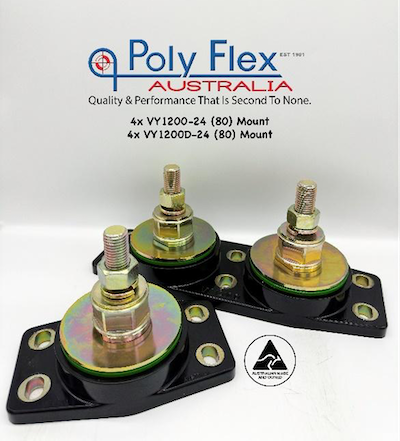Rubber and polyurethane have a similar use but have vastly different properties. While you may have seen aftermarket polyurethane engine mount upgrades for an original rubber component, knowing why that part is needed can be the difference between an enjoyable replacement and a nuisance. Rubber mounts are usually deemed to have an appropriate lifespan by engine mount suppliers. Polyurethane can be more durable, have an extended lifespan and is available in an incredibly wide range of durometers. Poly Flex proudly offers seven different durometers allowing us to tailor the product to isolate the maximum levels of vibration and durability.
The tensile strength, absorptive capabilities, tear and cut resistance, and overall simplicity of polyurethane make it an excellent choice for replacement mounts. Polyurethane engine mounts, compared to traditional rubber mounts, have a multitude of benefits, including but not limited to:
- Unlike rubber, polyurethane engine mounts are highly resistant to oil, fuel, coolants, grease, and debris.
- Polyurethane engine mounts perform extremely well in hot and cold temperatures.
- Polyurethane engine mounts don’t transmit electrolysis between aluminium and steel structures.
- Polyurethane engine mounts can handle shock and impact due to the base material’s 400% stretch factor.
- Polyurethane engine mounts are designed to have a captured design and be fail-safe.
Poly Flex is an Australian company and, since commencing in 1981, has been manufacturing in-house and dispatching polyurethane engine mounts worldwide. For more information regarding Poly Flex polyurethane engine mounts, including more reasons why our polyurethane engine mounts are second to none, please click here. For all enquiries regarding polyurethane engine mounts, contact us today.



